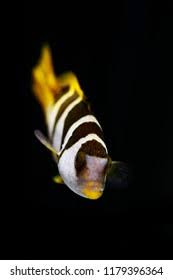Dragons and the Cosmic Creation Stories in Chinese Mythology

In Chinese culture, dragons are not just symbols of power and royalty, but also powerful representations of cosmic forces, creation, and the natural order of the universe. These majestic creatures, deeply embedded in the folklore, myths, and traditions of China, are intertwined with the creation of the cosmos and the forces that govern it. The dragon’s association with the celestial realm and its active participation in the formation of the universe makes it a unique figure in Chinese mythology, reflecting deep spiritual beliefs about the origins and structure of the world.
This article explores the rich and varied stories of dragons in Chinese mythology, focusing on their role in the creation of the universe. We will delve into the symbolic meanings of these stories, the way they reflect ancient Chinese cosmology, and the connections between dragons and the natural elements.
1. The Role of the Dragon in Chinese Cosmology
Chinese cosmology is based on an intricate understanding of the natural world and its balance. The Taoist and Confucian philosophies underpin much of Chinese thought, emphasizing the dynamic interplay between the forces of Yin and Yang, the Five Elements (Wood, Fire, Earth, Metal, and Water), and the cosmic balance of the universe. In this context, the dragon is a key figure, embodying the Yang energy (masculine, active, and dominant), which complements the Yin energy (feminine, passive, and receptive).
The dragon is closely associated with the element of water. In ancient China, water was considered a powerful force of life, and its control was vital for the prosperity of the land. The dragon was believed to have the ability to summon rain and govern rivers, lakes, and seas. This control over water also linked the dragon to the creation of life and the maintenance of cosmic harmony.
However, the dragon’s role goes beyond controlling natural elements. It is often seen as a cosmic being, an agent of creation that works alongside other divine figures in the formation of the world and its structure. The dragon’s power is limitless, and it is said to move freely through the realms of heaven, earth, and the underworld, symbolizing its dominion over all aspects of existence.
2. The Creation Myth and the Cosmic Dragon
One of the most significant stories involving the dragon in Chinese mythology is the Pangu myth, which tells the tale of the creation of the world. According to the myth, the universe was once a chaotic, formless mass, similar to an egg. Inside this egg lived Pangu, a giant being who represented the first form of life. For eighteen thousand years, Pangu grew, and with his growth, the separation between the heavens and the earth began to take place.
In this creation story, the dragon plays an essential role in Pangu’s awakening and the separation of the heavens and earth. As Pangu broke free from the egg, the chaos was split into two distinct realms: the Heavens (Yang) and the Earth (Yin). The dragon’s presence is symbolic in this process, representing the active and transformative forces that help in shaping the cosmos.
It is said that after the separation of the heavens and earth, Pangu, exhausted by his monumental task, lay down and transformed into various natural elements: his breath became the wind, his voice became thunder, and his eyes became the sun and the moon. The dragon was believed to be a manifestation of this cosmic transformation, representing the forces that shaped the universe from chaos to order.
3. The Dragon and the Great Flood: A Symbol of Creation and Destruction
Another well-known myth involving the dragon in Chinese cosmology is the story of the Great Flood and the Yu the Great myth. This tale explains the origins of Chinese civilization and how the natural world was shaped and tamed by the efforts of the first great hero, Yu.
The myth tells of a time when a terrible flood covered much of ancient China, overwhelming the land and threatening the existence of humanity. In response to this disaster, the dragon played a crucial role. According to the myth, the dragon, along with other celestial creatures, worked together to help the great hero Yu control the floodwaters. The dragon’s role was to direct the water and ensure that it flowed in a way that allowed human settlements to thrive again. The dragon, representing the raw power of nature, was a tool in the hands of Yu, whose efforts eventually led to the formation of river systems that helped cultivate the land and support human life.
The Great Flood myth, in which the dragon is both a destructive and creative force, illustrates the duality of the creature’s nature. On one hand, the dragon is capable of unleashing floods and storms, devastating the land. On the other hand, it is also a symbol of renewal and creation, as it helps reshape the world and restore order.
4. The Dragon as a Celestial Being: The Foundation of the Universe
The dragon’s role in Chinese cosmology is not limited to the creation of the earth and water. It is also associated with the heavens and the celestial realm. In Chinese mythology, the heavens are not merely a distant, passive space. Instead, they are actively involved in the creation and sustenance of the universe, and the dragon is often depicted as a ruler or guardian of this celestial realm.
One of the most famous tales involving the dragon and the heavens is the story of the Yellow Emperor (Huangdi), one of the legendary rulers of China. In this myth, the Yellow Emperor is said to have ridden a dragon as he ascended to the heavens. The dragon, in this case, is not only a means of transportation but also a guide and protector, representing the Emperor’s divine connection to the cosmos.
The dragon, in its celestial form, is also associated with immortality and eternal life. In some stories, it is believed that the dragon holds the secrets to the universe and is capable of transforming the world into a harmonious and eternal place. The dragon’s presence in the heavens thus represents the cyclical and eternal nature of the universe.
5. The Dragon and the Jade Emperor: Cosmic Governance
Another significant aspect of the dragon’s role in Chinese mythology is its connection with the Jade Emperor (玉皇), the supreme ruler of heaven. The Jade Emperor governs the celestial realm and all its inhabitants, and it is said that the dragon serves as one of his most trusted servants. In the Book of the Heavenly Dragon, a prominent Taoist text, the Jade Emperor is described as being accompanied by a group of dragons who serve as his messengers and enforcers of cosmic laws.
These dragons, also called Heavenly Dragons, are responsible for maintaining balance and harmony in the universe. They regulate the forces of nature, control the weather, and ensure that the elements do not fall out of balance. Through these duties, the dragons play a vital role in sustaining the universe’s harmony and stability.
In Taoist beliefs, the dragon is not just a symbol of power but also of wisdom and knowledge. The dragon’s connection with the Jade Emperor emphasizes the creature’s role as a mediator between the earthly and celestial realms, bridging the gap between the human world and the divine.
6. The Symbolism of the Dragon in the Cosmic Order
Across these myths, the dragon emerges as more than just a creature of myth—it is a symbol of cosmic order, creation, and the interconnection of all natural forces. The dragon is intimately tied to the Five Elements: Wood, Fire, Earth, Metal, and Water. Its presence in creation stories often reflects its role in maintaining the balance between these elements, symbolizing the harmonious flow of nature.
In some legends, dragons are depicted as living at the source of rivers, where they control the flow of water and ensure that the land is nourished. In other stories, dragons are shown as agents of cosmic transformation, bringing order to chaos and helping to shape the world according to natural laws.
The dragon’s power is seen as both creative and destructive, capable of harnessing the forces of nature to create life or unleash devastation. This duality is central to the Chinese conception of the universe, where creation and destruction are seen as two sides of the same coin—each necessary for the maintenance of cosmic harmony.
Conclusion
The dragon is a central figure in Chinese mythology, deeply intertwined with the creation of the universe and the forces that shape the natural world. From its role in the Pangu myth to its involvement in the Great Flood, the dragon represents the dynamic forces of creation, destruction, and transformation. It is both a cosmic force and a divine creature, capable of regulating the elements, guiding the Emperor, and maintaining the balance of the universe. Through these stories, we see the dragon not only as a symbol of strength and power but as a guardian of cosmic order, embodying the intricate relationships between the heavens, the earth, and humanity.
The dragon’s connection to the creation of the universe speaks to its timeless significance in Chinese culture—a creature that is not only a symbol of divine authority but also an essential agent of the world’s ongoing creation and transformation. As such, the dragon remains one of the most powerful and enduring symbols in Chinese mythology, a constant reminder of the forces that govern the universe and the delicate balance that sustains it.

